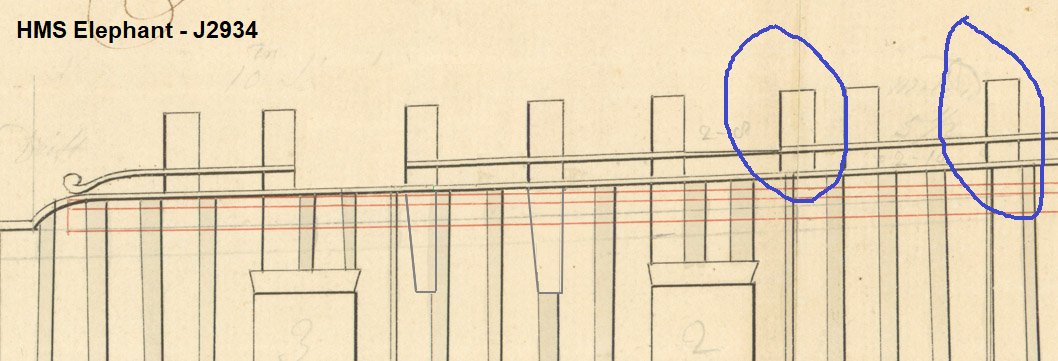-
Posts
13,289 -
Joined
-
Last visited
Content Type
Profiles
Forums
Gallery
Events
Everything posted by druxey
-

Yet Another Pandora 3D build
druxey replied to herask's topic in CAD and 3D Modelling/Drafting Plans with Software
Lovely atmospheric work. It it always sunny there?- 119 replies
-
Yeah, Kevin, I feel your pain. Getting the cat tails scored under the beams is very tricky.
- 1,124 replies
-
Henry: cumulative error means that the first thing one does is a tiny bit off. The next, measured from the first, is a little more off... and before you know it, everything has become way off. It's the rolling snowball effect. The only way to avoid this problem is by repeatedly re-measuring and checking things, be it a distance or an angle. With a scratch build like yours or Kevin's, it's imperative. One can't be even a bit careless and get away with it. Ask me how I know!
- 1,124 replies
-
Well done, overcoming obstacles. Often one needs to invent workarounds of one sort or another, whether it's a kit or scratch-built model. Succeeding gives one a great feeling of accomplishment.
- 167 replies
-
- Norwegian Sailing Pram
- Model Shipways
-
(and 1 more)
Tagged with:
-
Not looking after this now could develop into a 'knock on' one of cumulative error. I've had that happen, which is most annoying!
- 1,124 replies
-
Just catching up with your progress now, Kevin. Coming along! The bitts are vertical to the keel rather than the deck sheer, I believe. (I don't have the plan with me right now.)
- 1,124 replies
-

Looking for ideas for work area
druxey replied to Desertanimal's topic in Modeling tools and Workshop Equipment
First consideration: how big is the space? That will often dictate what is practical and what is not. -
"Curiouser and curiouser," said Alice!
- 288 replies
-
- Santos Dumont No. 18
- hydroplane
-
(and 1 more)
Tagged with:
-
This may sound bizarre, but in the first photo it appears that the seat and wheel, as well as the foil/rudder, is rotated. Was steering literally by the 'seat of the pants'?
- 288 replies
-
- Santos Dumont No. 18
- hydroplane
-
(and 1 more)
Tagged with:
-
First, it is considered standing rigging and therefore was tarred to preserve it. Secondly, sailors got this on them when they climbed the rigging, hence the traditional name 'tars'. I'm sure Trevor could confirm that!
-

Fractal vise on kickstarter
druxey replied to DavidG's topic in Modeling tools and Workshop Equipment
I wonder what the jaw capacity is? -
Tubing is a difficult material to bend. What about softened copper rod or wire?
- 288 replies
-
- Santos Dumont No. 18
- hydroplane
-
(and 1 more)
Tagged with:
About us
Modelshipworld - Advancing Ship Modeling through Research
SSL Secured
Your security is important for us so this Website is SSL-Secured
NRG Mailing Address
Nautical Research Guild
237 South Lincoln Street
Westmont IL, 60559-1917
Model Ship World ® and the MSW logo are Registered Trademarks, and belong to the Nautical Research Guild (United States Patent and Trademark Office: No. 6,929,264 & No. 6,929,274, registered Dec. 20, 2022)
Helpful Links
About the NRG
If you enjoy building ship models that are historically accurate as well as beautiful, then The Nautical Research Guild (NRG) is just right for you.
The Guild is a non-profit educational organization whose mission is to “Advance Ship Modeling Through Research”. We provide support to our members in their efforts to raise the quality of their model ships.
The Nautical Research Guild has published our world-renowned quarterly magazine, The Nautical Research Journal, since 1955. The pages of the Journal are full of articles by accomplished ship modelers who show you how they create those exquisite details on their models, and by maritime historians who show you the correct details to build. The Journal is available in both print and digital editions. Go to the NRG web site (www.thenrg.org) to download a complimentary digital copy of the Journal. The NRG also publishes plan sets, books and compilations of back issues of the Journal and the former Ships in Scale and Model Ship Builder magazines.





